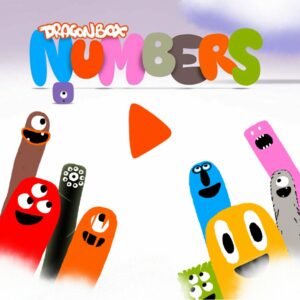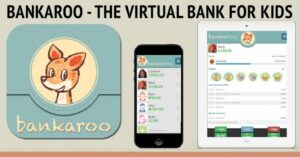It’s never too early to teach kids about money!
Given how important financial lessons, including saving strategies and money-management skills, are to help children achieve long-term success, we are quite surprised that the local schools don’t teach that much about money.
However, as a parent, you can teach your child money skills – and you should. A University of Cambridge study showed that kids from their money habit by as early as 7 years old and that their observant eyeballs are usually watching when their parents make monetary transactions. With a little bit of deliberate involvement, you can give your kids a financial head start.
“It’s actually easy to teach kids about money,” says Jayne A. Pearl, an Amherst, MA-based author of Kids and Money: Giving Them the Savvy to Succeed Financially. “Turn your day-to-day activities into learning experiences.” Trips to the bank, store, or the ATM machine, for instance, can be a perfect opening for a discussion about your values and how you use money. When children are very young, you can work money concepts into your child’s imaginary games, like playing simulating stores or restaurants. The sooner parents start taking advantage of everyday teachable money moments, the better they can make monetary decisions, whether it’s buying a toy they want or saving for college.
In this article, we suggest some top money lessons can be learned at each age, as well as activities to illustrate each point, and some useful websites and apps to practice those skills. Read on for some fun, simple ways to introduce finance to your child.
 Age 3-5: You may have to wait to buy something you want.
Age 3-5: You may have to wait to buy something you want.
Good spending habits are rooted in the ability to delay gratification. For example, your kid has to wait for a month to buy a Lego box he has been eyeing. Children begin to comprehend the concept of waiting between ages 3 and 5. This provides you with the opportunity to teach them about how waiting factors into saving and spending.
This is a hard concept for people to learn of all ages. However, the ability to delay gratification can also predict how successful one will be as a grown-up. Kids at this age need to learn that if they really want something, they should wait and save up to buy it.
A three-year-old can grasp money concepts like saving and spending. Parents can use allowance to teach children about waiting and spending. Find a reasonably priced toy, for example, say around 100K VND, that your child wants and tell them they’ll have to wait and save for the toy. Give your child 20K for allowance each week and, when 5 weeks pass, take her to buy it.
Skills can be learned at this age:
- Counting money
- Earning
- Spending
- Saving
- Giving
Activities for ages 3 to 5:
- Start small. If a child is waiting in line to use a slide or a swing set at a playground, explain to them that part of life is learning to wait for the things we want.
- An imaginary shop in the living room is more than just a fun way for your child to exercise her imagination. By exchanging play money for goods, your child begins to understand the basics of commerce. You can use cereal boxes, fruit, sponges, or paper towels as store items. Together, make pretend money and shop till you drop.
- Create three jars – each labeled “Saving,” “Spending” or “Sharing.” Every time your child receives money, divide the money equally among the jars.
 Apps that can help:
Apps that can help:
- Dragonbox Numbers: Dragonbox Numbers teach your child what numbers are, how they work, and what we can do with them. Your child can build up her number sense through very well-designed, interesting and kid-friendly activities.
- Peter Pig’s Money Counter: This app helps young kids aged 5-8 learn important money skills. Children learn to make purchases within a budget, put money aside for savings and are rewarded for good saving habits. Features include three interactive games, fun facts about money, savings tips, a trip to the virtual store where kids can buy accessories to dress up Peter Pig and save a photo to their device.
Age 6-10: You need to make choices about how to spend money
At this age, it’s important to explain to your child: Money is finite and it’s important to make wise choices, because once you spend the money you have, you don’t have more to spend. While at this age, you should also keep up with activities like saving, spending and sharing jars, and goal-setting, you should also begin to engage your child in more adult financial decision-making.
This age is also the perfect stage to start explaining the difference between wants and needs, so that they can make better financial choices later in life. Discuss the difference between ‘needs’ and ‘wants’, and encourage your kids to think about these before spending their money. For example when you’re in the store and your children are asking for a new video game or piece of clothing, instead of just tossing it into the cart, talk to them about whether it’s something that’s really important to them or if it’s an impulsive financial purchase.
Skills can be learned at this age:
- Goods vs. Services
- Needs vs. Wants
- Short vs. Long term goals
 Activities for ages 6 to 10:
Activities for ages 6 to 10:
- Include your child in some financial decisions. In addition to games, allows children to see the impact money has on day-to-day activities. When you’re shopping, talk aloud about how you’re making your financial decisions as a grown-up, asking questions like, “Is this something we really, really need? Or can we skip it this week since we’re going out to dinner?” “Can I borrow it?” “Would it cost less somewhere else? Could we go to the discount store and get two of these instead of one?”
 2. Give your child some money, like 20K VND, in a supermarket and have her make choices about what snack to buy, within the parameters of what you need, to give them the experience of making choices with money.
2. Give your child some money, like 20K VND, in a supermarket and have her make choices about what snack to buy, within the parameters of what you need, to give them the experience of making choices with money.
3. Have your child set a goal. Every time she adds money to the savings jar, talk with her about how much she needs to reach her goal, and when she will reach it.
Apps that can help:
- Savings Spree: Savings Spree is a fun app for children ages 7 and up. The game teaches kids how the daily lifestyle choices that they make can add up to big savings or big expenses, depending on how they choose to spend (or not spend) their money.
- Financial Football: Visa and the National Football League have teamed up to create Financial Football. This fast-paced, interactive game requires players to answer personal finance questions to score points. If your child is a soccer lover, this app will be a brilliant way to incorporate financial lessons into his favorite sport!
Age 11-13: The sooner you save, the faster your money can grow from compound interest.
By the time your kids are in middle school, they likely have a fair understanding of how money works and their opinions about how to spend and save are already starting to form. At this age, you can shift from the idea of saving for short-term goals to long-term goals. Instead of letting children use their entire allowance to make big purchases, offer to match their savings up to a certain amount. Introduce the concept of compound interest, when you earn interest both on your savings as well as on past interest from your savings.
At Everest Education, we started to teach our students about interests and compound interests at the beginning of their middle school as well. “What would you do if you had $100 right now?”, we asked. While other students claimed that they would buy food and toys and video games and even lottery tickets, there was a boy who said: “I would lend money to my friends and take an extra charge”. – and that’s how we sneak in the concept of interest!
Skills can be learned at this age:
- Credit
- Debt
- Interest
- Budgeting

Activities for ages 11 to 13:
- Introduce a reasonable allowance, giving the child the opportunity to manage their own finances. If a child wants a particular toy, make it that they’ll need to earn the money themselves by saving up their allowance.
- If you can afford it, consider starting a savings account for your child. For example, put 1,000,000 VND in the bank and get statements each month, showing your child how interest grows each month and the amount of money increases over time. You can even encourage your child to put a fraction of their weekly allowance into savings.
3. Give commissions, not allowances. Don’t just give your kids money for nothing. Pay them commissions based on chores they do around the house like taking out the trash, cleaning their room, or mowing the grass. In the book Smart Money Smart Kids, Dave and his daughter Rachel Cruze talk a lot about this system. This concept helps your kids understand that money is earned – it’s not just given to them.
Apps that can help:
- Bankaroo: Bankaroo is a virtual bank for kids, where you can teach them about the value of money in a safe environment. Kids will learn how to budget, save up for goals and spend responsibly using our cool easy-to-use app and website.

- Stock Market Game: This is a program sponsored by SIFMA (Securities Industry and Financial Markets Association) Foundation to engage students grades 4-12 in the world of economics, investing and personal finance. Not only does this tool help students build a fundamental understanding of investing, it also provides them with real-world skills practice in math.
- BusyKid: BusyKid allows parents to manage their children’s chores, pay them, and put that money on a reloadable Visa card for the kids to use, so they’re the ones seeing the balance adjust with every purchase and every chore.
Age 14-18: To prepare for the world, be sure to consider how much each thing would cost.
High school years are the final step before your kids make it out into the world on their own. Although they can be difficult, conversations about finances are important to have with your high school-aged kids. Before they leave for college or jump into the workforce, helping them understand their own relationship with money can help them succeed both when they first make it out into the world and for decades to come. Talk to your kids about how they can start saving for college while they’re still in high school and use the money they’re earning from a summer job to get a head start. You should also educate them about how loans work and the eventual payback process so that they understand borrowing money now means you could pay more later. Encourage them to ask questions when it comes to money and create a safe environment where they can come to you about it.
Skills can be learned at this age:
- Works
- Banking
- Investing (stock vs bonds)
- Taxes
- Good vs. Bad debt
Activities for ages 14-18:
- “Sit down together and create a budget that includes categories and monthly expenses. Help them review the budget on a quarterly basis to make sure they stay on track,” advises Jeremy Straub, CEO of Coastal Wealth, a financial firm in Fort Lauderdale. While your child won’t be paying monthly bills like an electricity or water bill, if she has to pay for her own cell phone bill, or maybe birthday gifts for her friends… you can factor these extra expenses into a budget.
- Discuss the cost of college: As your child enters high school, discuss college and costs of tuition. This will teach your child how to invest financially in their future, increasing the likelihood of financial stability and success long term. Websites like College Scorecard can be used to explore the financial benefits of colleges. The site provides information on employment rates of alumni, the average student debt, and whether the money spent ultimately pays off.
- Encourage your teens to get jobs and earn money. Teenage years are a great time for kids to start finding a summer job to supplement their allowance or gifts that they get throughout the year.

While the familiar summer jobs, like working at grocery stores or coffee shops are still popular, there are many opportunities for older kids to make an income online by doing translation jobs, being English tutors or freelance writers… After all, if your teen starts working, she will appreciate all of the work you do – and what it takes to fund your family’s lifestyle.
4. Introduce the concept of investing: Once they’ve mastered basic banking skills, encourage your kids to learn about the complexity of globalized markets. Explore the idea of stocks, mutual funds, or savings accounts.
 Apps that can help:
Apps that can help:
- JA Build Your Future™: This app allows teens to explore more than 100 careers; see what levels of education are required, from no education to a doctorate; learn about potential income; and then calculate the cost of education, including factoring the cost of attending in-state, out-of-state public universities and private universities.
- Mint: This is arguably the best-known personal finance app. Mint really is aimed at adults, but if you have teens who have a bank account and a job and even pay some bills, it may be perfect. If your teens spend too much and don’t stay within their budget, Mint will let them know.
- Free Stock Market game: FREE stock market game that allows users to create their own custom stock game and create educational lessons for their players. It is used by over 400,000 individuals and students each year. Users can then create their own custom stock market contest and invite their classmates, friends, family or co-workers to a friendly competition. If your child is good at English and has the potential to become a successful entrepreneur in the future, encourage her to give it a try!



 Age 3-5: You may have to wait to buy something you want.
Age 3-5: You may have to wait to buy something you want. Apps that can help:
Apps that can help:
 Activities for ages 6 to 10:
Activities for ages 6 to 10: 2. Give your child some money, like 20K VND, in a supermarket and have her make choices about what snack to buy, within the parameters of what you need, to give them the experience of making choices with money.
2. Give your child some money, like 20K VND, in a supermarket and have her make choices about what snack to buy, within the parameters of what you need, to give them the experience of making choices with money.


 Apps that can help:
Apps that can help:










